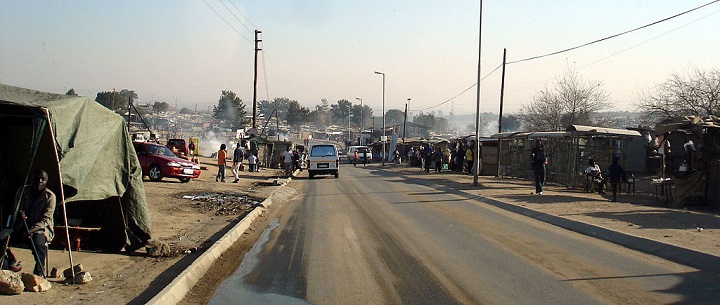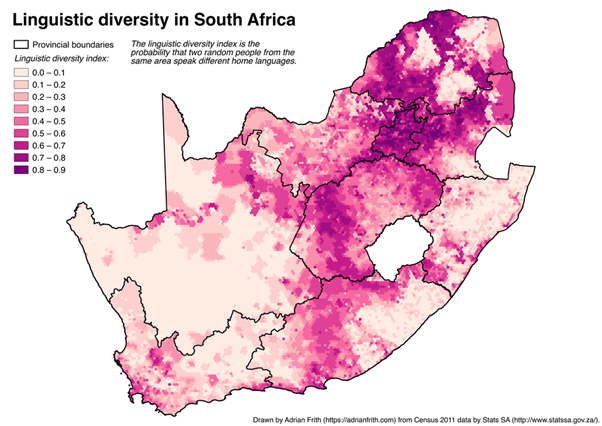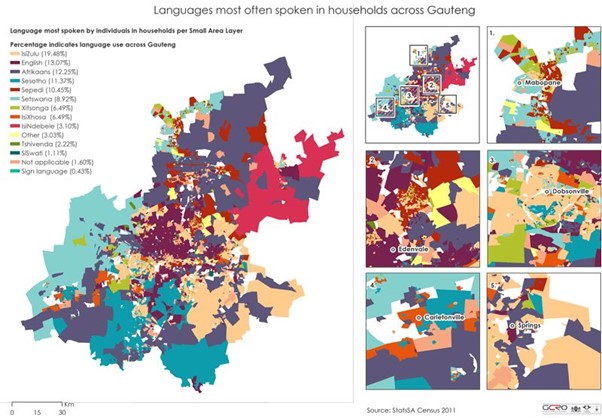Déjà vu: Anti-immigrant and xenophobic attitudes as a recurrent feature of post-apartheid South Africa


Tinashe Chimbidzikai is a PhD candidate with Georg-August University of Gottingen, Germany, and an external PhD candidate in the Graduate Programme African Studies at the ASCL. The working title of his research is (Re)production and imagination of urban social space by Pentecostal Christian migrants in South Africa: A narrative ethnography.
While the Western media’s attention has been gripped by the devastating floods that ravaged the south-eastern coastal province of Kwazulu Natal in South Africa, the country is also battling the growing anti-immigrant attitudes driven by vigilante groups like Operation Dudula. In recent weeks, African immigrants living in low-income communities like townships, informal settlements, and the inner-city suburbs of large cities like Johannesburg, Durban, Cape Town, and Pretoria have been targeted by local South Africans. The growing citizens’ anger and resentment resulted in the gruesome murder of Elvis Nyathi, a Zimbabwean immigrant by a mob in Diepsloot township at the beginning of April 2022.
Superdiversity
Diepsloot is a poor and underserviced high-density residential township north of Johannesburg. Established in 1995, the township is a mixture of imikhukhu (shacks made from corrugated iron sheets) and RDP (Reconstruction and Development Programme houses) formal settlements for an estimated 350,000 residents. A sizeable proportion of this population is from Zimbabwe, Mozambique, Nigeria, Malawi, Ethiopia, Somalia, Lesotho and Bangladesh. Although 98% of the residents are black Africans, Diepsloot is diverse in terms of ethnocultural background, language, nationality, religion, age, gender, legal status, and class. Such migration-driven superdiversity (Vertovec 2007) means that social relations are sometimes characterised by ongoing shifts between cooperation and conflict as residents negotiate and navigate how to live with these differences (Meissner and Heil 2021: 742[1]). In this blog post, I discuss two critical issues. Firstly, I deal with how anti-immigrant sentiments have become episodic, as African immigrants are regularly scapegoated. This is mainly due to the post-apartheid government of the ruling African National Congress (ANC)’s failure to produce socio-economic equity for the majority of the black population. Secondly, I contend that the ongoing unrest targeting black Africans inadvertently reincarnates ‘the tyranny of paper regimes’ (Dhupelia-Mesthrie, Paper Regimes, 2014) that characterised the erstwhile apartheid era.
‘Necklacing’
On Wednesday 6 April, Elvis Nyathi, a 43-year-old Zimbabwean father of four was murdered in Diepsloot. A graphic video circulated on WhatsApp and other social media, showing Nyathi burning while a group of men poured petrol as he writhed in pain. The incident followed growing anti-immigrant calls instigated by organised groups like Operation Dudula (‘to push out’), Put South Africa First and far-right political parties like Patriotic Alliance and ActionSA. These groups seem to enjoy growing support among South African communities who feel marginalised and vent their frustration at the figure of the ‘Other’, that is black African immigrants as the source of their everyday troubles.
Nyathi, a gardener, was dragged from his mkhukhu (shack) by a mob of angry men. He was allegedly beaten with a golf club and stoned before being set alight, akin to ‘necklacing’. With its history in anti-apartheid movement, necklacing is a form of lynching carried out by forcing a rubber tyre drenched with petrol around a victim’s chest and arms, and setting it on fire. During South Africa’s anti-apartheid struggle in the 1980s-90s, necklacing was used in the black community in the townships to punish members who were regarded as collaborators (real or imagined) with the apartheid government. In the post-apartheid era, necklacing has continued as method of choice for meting instant justice against individuals accused of crime. Elvis’s death is reminiscent of Ernesto Alfabeto Nhamuave, a Mozambican national who was also beaten, stabbed and set alight in Ramaphosa informal settlement in May 2008. During the 2008 series of xenophobic attacks 62 people were left dead, and over 50,000 internally displaced. Among the deceased were 21 South Africans, who were mistakenly identified as ‘foreigners’ due to language differences or having a ‘darker skin’ tone and therefore categorised as the ‘Other’.
Encounters with linguistic diversity
The aftermath of Elvis’s death shows that language continues to be a crucial category of ‘othering’ as it reflect how social difference is lived and experienced in everyday encounters between immigrants and locals. For instance, when Elvis was murdered the local South African Police Service (SAPS) moved into Diepsloot and arrested over 50 people in connection with violent disturbances in the neighbourhood. Frans Manganyi, a South African citizen, almost got arrested by the police because his “Tsonga [language] was different from that of the police officer”. Due to the accent difference, the police officer presumed that Frans was a mukwerekwere (derogatory word for African immigrant). The incident drew wide condemnation from South Africa’s minority ethnic groups.
According to the maps produced by the Gauteng City-Region Observatory (GCRO), based on the 2011 census report, Gauteng province has a linguistic index factor of over 0.5 (between 0.5-0.9). This shows the highest levels of linguistic diversity as the probability of two random people from the same neighbourhood speaking different home languages increases from 0.0 up to 0.9. Due to migration-driven diversity, linguistic diversity increases in Johannesburg and in specific suburbs and settlements.

Map drawn by Adrian Frith from Census 2011 data by Stats SA.
When I contacted some of my interlocutors in the aftermath of Elvis’s murder, they expressed worry but indicated that they were safe as they reside in relatively affluent suburbs north of Johannesburg. The choice of residence and neighbourhood has become an effective strategy for African immigrants with the means to deal with everyday hostilities in public space. Migration researchers Loren Landau and Iriann Freemantle call this ‘tactical cosmopolitanism’ and it takes several forms such as ‘rhetoric of self-exclusion’, and ‘rhetoric of rights’.

Source: GCRO/ StatsSA 2011.
‘Paper regimes’ and ‘dompas’ reincarnation?
Elvis’ assailants demanded cash (R300, equivalent to 19 euro) and ‘papers’ (passport and valid visa) before he was killed for failure to bribe. Local residents have called on the police to implement a stop and search operation in Diepsloot. The African National Congress Youth League (ANCYL)’s Thabang Molefe suggested that
“South Africans must start walking around with IDs. We want an operation ‘stop, search and arrest’ here in Diepsloot. Police must randomly search us. We want ‘trap and los’ because the police are failing us […]. You can call it whatever [you want]. It’s not apartheid; it’s South Africa for South Africans. We told the minister the TRT [Tactical Response Team] that is deployed here must search everyone.”
The suggestion has divided opinion with some South Africans subscribing to this as a viable solution to curbing crime allegedly committed by undocumented foreigners. However, a large section argues that it infringes on the fundamental rights enshrined in the South African constitution and the Freedom Charter. Other argue that the ‘stop and search’ operation is reminiscent of the Pass Laws [1952], the most reviled apartheid-era laws which compelled black persons above 16 years to carry a passbook or dompas (Afrikaans for ‘stupid pass’). While the estimate of undocumented foreigners in South Africa is difficult to establish, Zimbabweans constitute the largest percentage, due to various factors, including porous borders between the neighbouring nations. In 2010, South Africa introduced a scheme to regularise thousands of undocumented migrants. Over 200,000 Zimbabweans were granted the Dispensation of Zimbabweans Project (commonly known as DZP) permits. The permits were renewed in two rounds. First in 2014 as the Zimbabwean Special Dispensation Permit (ZSP), which expired in 2017. Second in 2017 as Zimbabwe Exemption Permit (ZEP), which will expire in December 2022. The South African government has indicated that the ZEP will not be renewed and gave the permit holders a 12 months grace period ‘to migrate to other permit regimes suitable to their circumstances’.
Xenophobia or criminality?
Scholars and policymakers are still divided on how to frame the discourse on the attacks on black African immigrants. On one hand, the government and politicians blame ‘criminal’ elements as perpetrators of violence against immigrants. On the other hand, scholars argue that the pattern of targeting black African migrants should be regarded as a classic case of Afrophobia. Cyril Ramaphosa, the South Africa President, dismissed claims that foreign nationals perpetuated crime.
“Contrary to what is claimed by some anti-immigration groupings and individuals, the perpetrators of crime are both black and white, male and female, foreigner and citizen. Crime, not migrants, is the common enemy we must work together to defeat.”
Convivial disintegration?
Is Elvis’ gruesome death the last of black African immigrants in South Africa? Unfortunately, it seems not so, as anti-immigrant violence against Africans has become a recurring phenomenon in Africa’s largest economy. If anything, the growing popularity of nationalist political parties like South African First (SAF), Patriotic Alliance, and other outfits like Operation Dudula and #PutSouthAfricaFirst points to a growing resentment towards black foreigners. Unless the post-apartheid government address the growing unemployment rate (currently at 35%), inequality, corruption, and poor service delivery, the figure of the black foreigner will always be perceived as a threat to disenfranchised South African citizens. Therefore, this episode is a wake-up call for policymakers, migration and diversity scholars to continue to engage in the debate around improving the integration of foreign nationals in South Africa, regardless of race, ethnicity, religion, sexuality, country of origin and other markers of difference. Unlike ‘whites’, black African immigrants in South Africa continue to be perceived as ‘strangers’, regardless of their subjective familiarity or level of integration to the host country.
[1] Meissner, F and Heil, T. (2021) “Deromanticising integration: On the importance of convivial disintegration”, Migration Studies, Volume 9, Issue 3: 740–758
Would you like to stay updated on new blog posts in the ASCL Africanist Blog? Subscribe here! Would you like to comment? Please do! The ASCL reserves the right to edit, shorten or reject submitted comments.
Top photo: Diepsloot, South Africa. Credit: ign11, CC BY 2.0 via Wikimedia Commons.


Add new comment